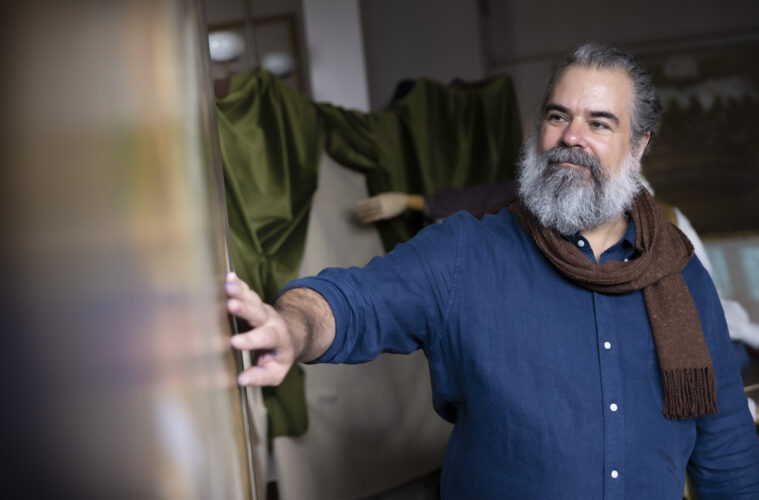“Have you ever seen anything so blue?”
Jonathan Sherman holds out a mason jar filled with a beautiful powder of the richest, most shocking blue. It’s ground stone—lapis lazuli from Afghanistan—and he’s using it to mix his own oil paint. He scoops a bit of the powder onto a marble board and adds a few drops of amber-hued Italian linseed oil that he thickened in the south-facing summer sun for three weeks. It’s a meticulous task but seems fitting for Sherman, an artist whose works, and even his Marblehead studio, feel of another time.
“The fascinating thing about oil paint is the oil and the pigment never actually fuse,” Sherman says, as he uses a small palette knife and a glass tool called a muller to prepare the paint to his preferred thickness. Instead, the pigment particles are suspended in the oil, helping to give the painting a luminescent quality as light passes through the layers of oil and gathers on the particles. Each particle is also a different size, giving the paint depth and interest, rather than having the bland uniformity of industrial, machine-created paints.
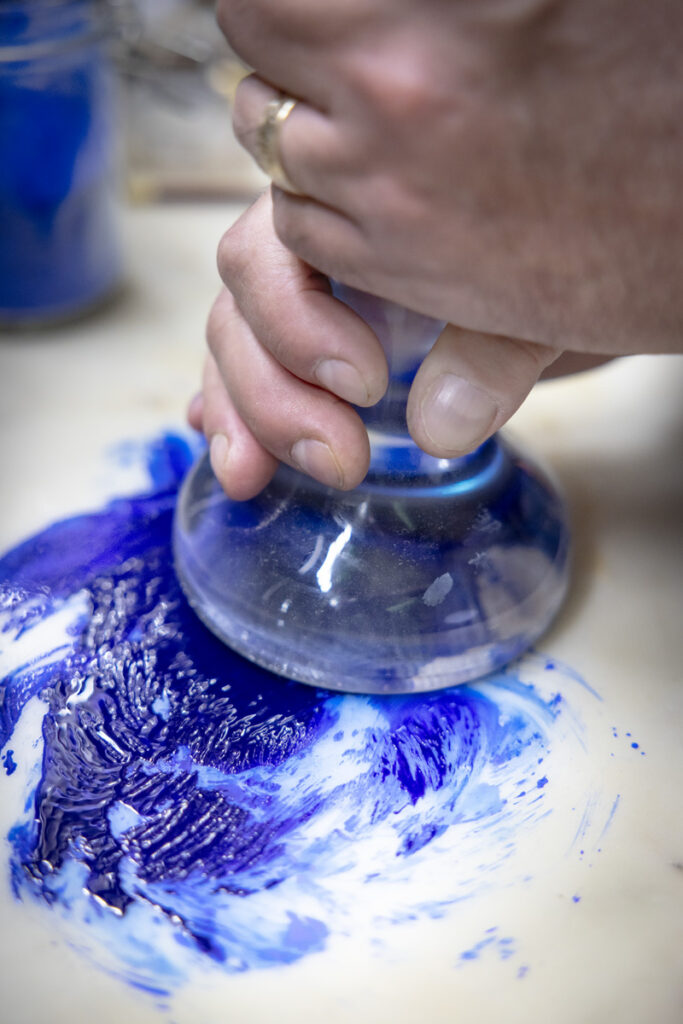
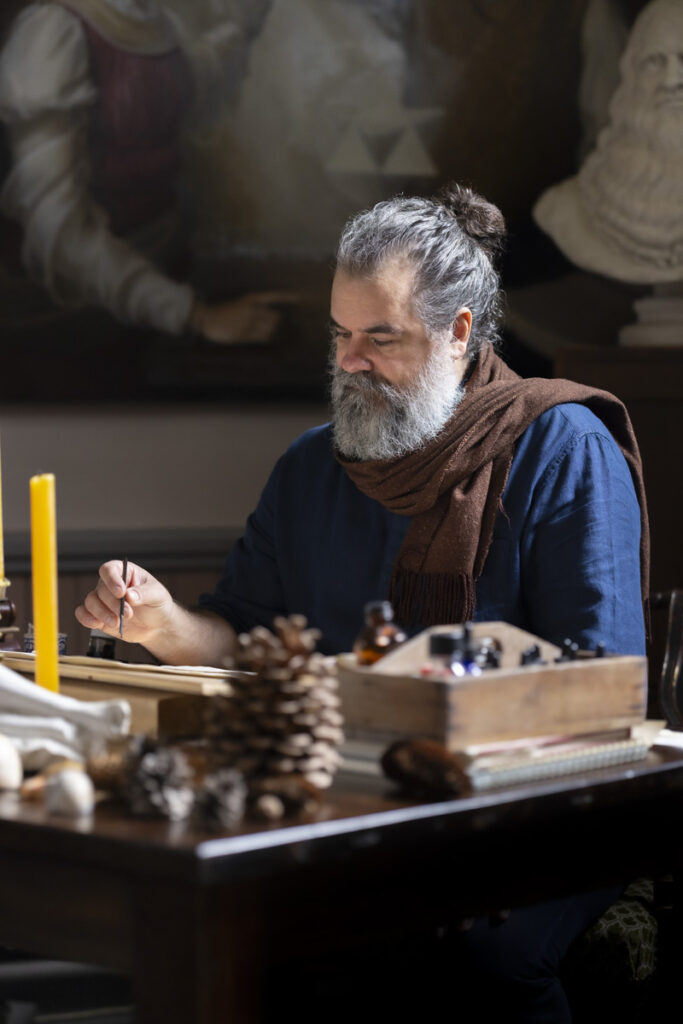
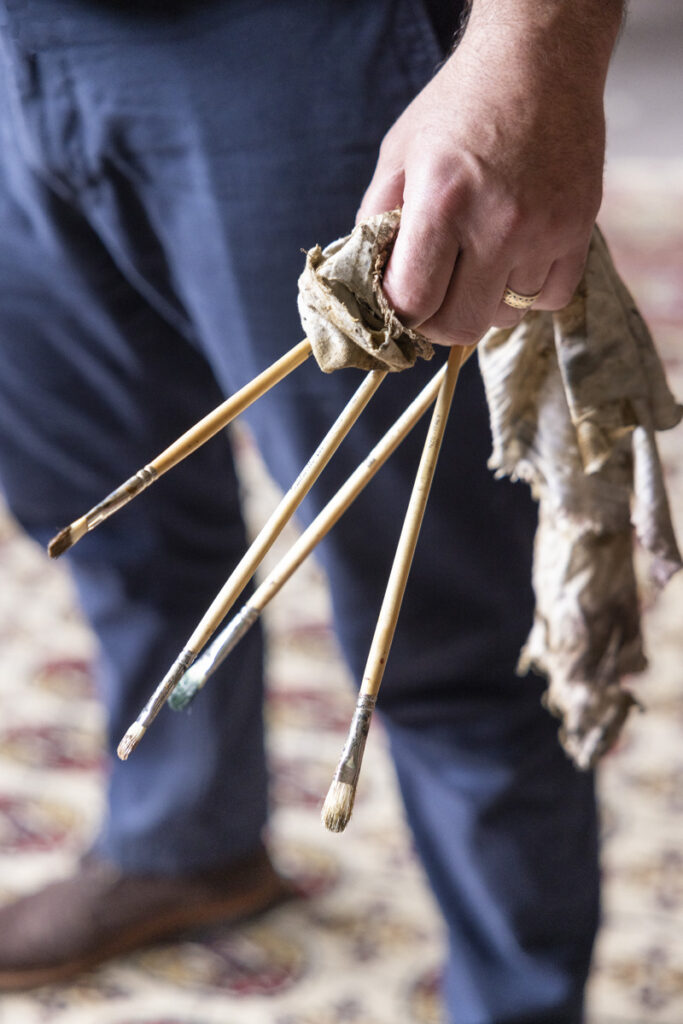
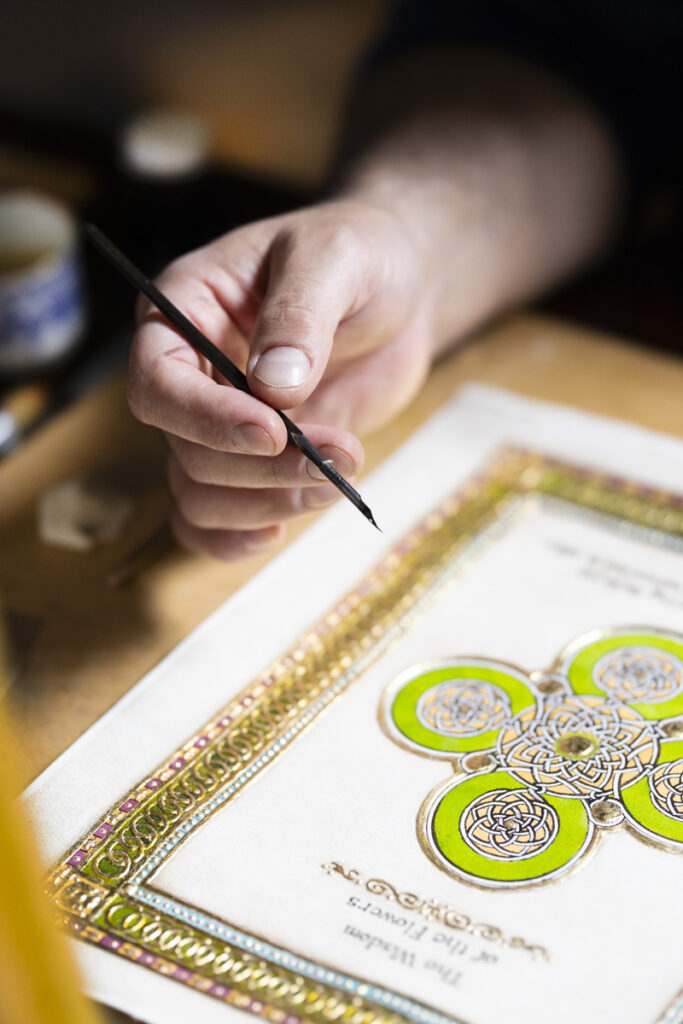
According to Sherman, it also speaks to the nature of life itself.
“Just in the tiny aspect of oil paint, it gives you a glimpse into something so much bigger about the world and our life, where the varied particle size is kind of like how our community works,” Sherman says. “When you have some variation—of different generations, young, old all being together—it works better. When there’s a homogeny to it, it tends to not work as well.”
It’s the kind of parallel that Sherman often draws in his work and artistic philosophy, pulling together ideas about life, nature, divinity, beauty, balance, and what it means to be human.
Sherman is a painter, sculptor, and draftsman, whose works, including commissions, are housed in private and corporate collections throughout the United States, Europe, and Australia. He’s hosting an unveiling event and party in his studio on Thursday, May 30, from 6 to 7:30 p.m., for a new, large-scale painting titled “The World of Light,” which examines “the relationship between human and spirit and the dissolving of the veil between the two.” There will also be light refreshments and time to view the other work in the studio, located at 112 Washington St., second floor.
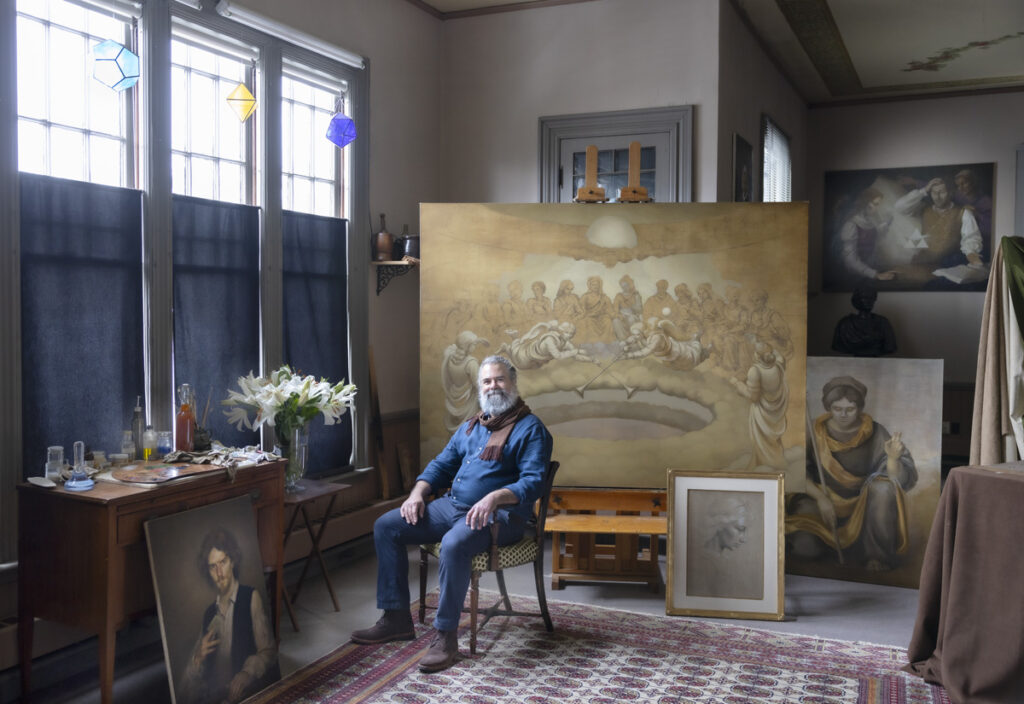
Sherman’s studio is an expansive, 1880-era, 1,600-square-foot space with high, painted ceilings and beautiful natural sunlight. It’s filled with antique furniture, books, easels, painting tools, finished pieces of art, and works in progress. Artist mannequins are set up alongside Sherman’s piece, “The World of Light,” dressed and posed like the subjects of that painting. Sherman’s bronze sculptures—busts of Leonardo da Vinci, Confucius, and Hypatia of Alexandria—line the edges of the studio, and a table is set up with intricate, hand-drawn prints of geometric knots. Being in the space and looking around feels almost like entering into a part of the artist’s mind.
“It’s full of paintings, drawings, and sculptures that are all created with a certain feel and sensitivity,” Sherman says of the studio. “They are a sort of timeless presence. People kind of step into the space, and it feels like a world of its own.”
That world is a blend of Old Town Marblehead and Old-World art that’s very fitting for the Marblehead native who studied drawing and painting in Florence at a private atelier, Charles H. Cecil Studios. There, he learned the technical skills of art, but also immersed himself in the philosophy of art and what it means to the human experience.
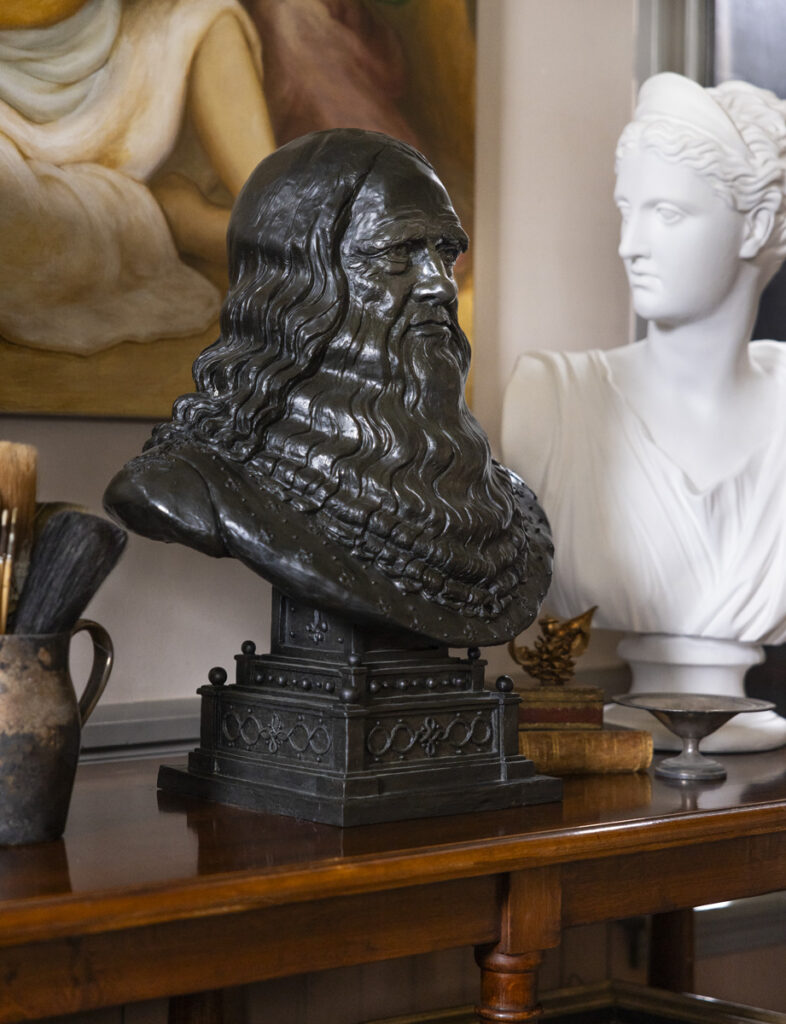

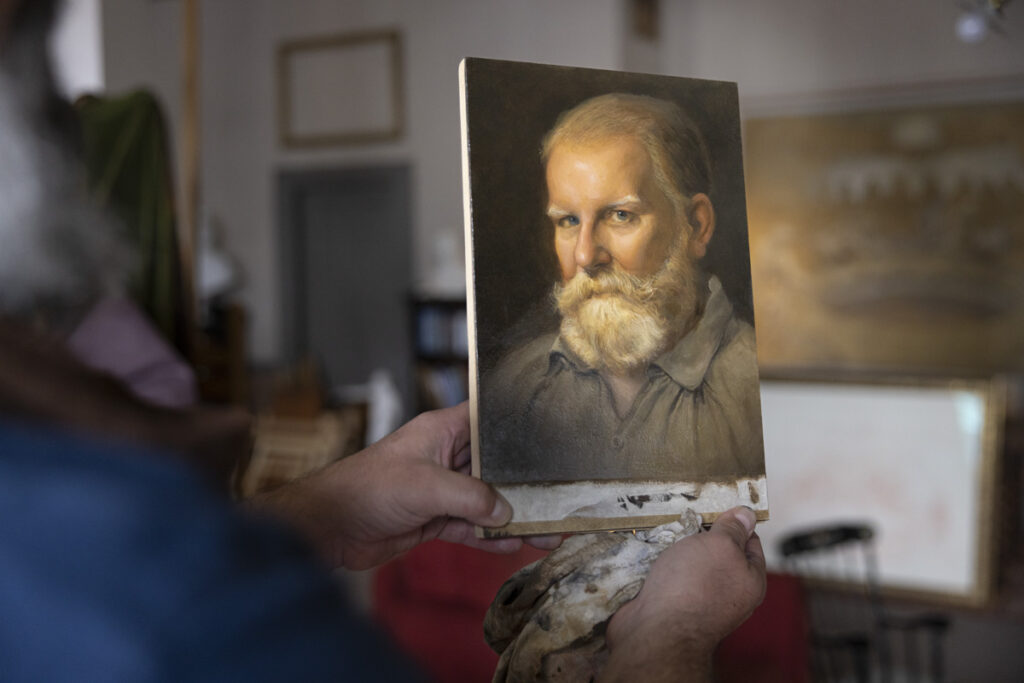
“Florence, Italy, is one of the greatest places in the world in terms of a real, immersed experience of beauty, from the design of the city, to the architecture, to the artwork. Everything is available to the individual who lives in that city,” he says.
Now, he’s made his home and his work life in Marblehead, along with his wife, Elizabeth, and their two young children, and finds inspiration there, too, not only from the history, landscape, and architecture, but also the people. He says Marblehead, “always represented as home in my heart.”
“Marblehead is a very beautiful place to be from a communal perspective, and I just loved connecting with the history of the town and the architecture and the natural beauty,” he says. “And that’s kind of a place that just made me feel good.”

